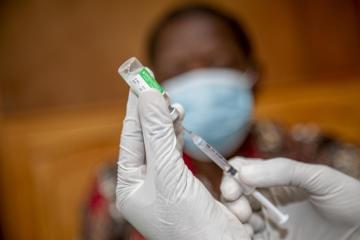WellPower, a Denver-based community behavioral health provider organization, aims to support and promote the connection between a person’s mental health and overall well-being. Its services are designed to help children, families and adults in the Denver community create a path to living happier and healthier lives.
The provider organization is an early adopter of the form of artificial intelligence known as natural language processing, or NLP. NLP does more than transcribe the spoken word or text – it understands it and enables computer systems to use it.
Wes Williams is the CIO at WellPower. Healthcare IT News interviewed Williams to discuss how NLP can help with behavioral health, the mood around NLP in behavioral health, what it will take to get more providers to adopt NLP and how NLP can help with social determinants of health.
Q. How can natural language processing tools help behavioral health providers?
A. NLP tools hold great promise for the behavioral health industry. An estimated 80% of the information in clinician notes is found in unstructured narrative data fields. NLP adds organization, context and search functionality to this vital information housed in complex electronic health records.
Many of the people we serve have been in treatment for years – even decades – and have worked with a variety of therapists and teams. Fine-tuning that rich historical lens to better serve our clients has long been a goal of mine, especially as it relates to suicide risk.
In fact, WellPower worked to independently develop a system to do the very thing that NLP vendor Augintel has created. We were thrilled to find a company laser-focused on this concept and eager to take part in something that can improve outcomes for the people we serve and help our hard-working staff improve efficiency and efficacy.
NLP can save a significant amount of time, especially around transitions of care with a new provider. We can much more easily retrieve the rich narrative context in clinical notes on a specific topic. It can also improve quality of care by ensuring clinical protocols are being followed and allowing our peer review teams to review more records for quality assurance.
Most exciting, NLP can help ensure that we are building on all the time previously invested. It can help us be more focused on the insights we help the people we serve uncover.
Q. Do you sense a general hesitation to adopt NLP across the behavioral health industry?
A. There is not necessarily a hesitation around NLP, but at this moment, behavioral health providers are stretched extremely thin with very limited capacity. The sharp post-pandemic rise in demand for behavioral health services coupled with a serious workforce shortage has led to long wait times, clinician burnout and other serious issues that prohibit providers from investing time in new technology.
While NLP could almost certainly help reduce clinician burden and improve outcomes, most providers feel unable to take the time to adopt a new process. For most people under pressure, it’s easier to put your head down and stick with a well-known 10-click process rather than invest the time and effort to learn a new three-click process instead.
Hopefully, easy onboarding and the strong results we hope to document will encourage our peers to join.
Q. What will it take to get more behavioral health organizations on board to leverage NLP and other tech tools, in general?
A. As more irrefutable evidence of the time and cost savings emerges, more behavioral health providers will embrace NLP. Augintel will work with early adopters like WellPower to pinpoint best practices and document the impact NLP can have.
We’re very excited to help showcase the benefit NLP can have for both our staff and the people we serve.
Q. It’s been widely recognized that social determinants of health have a huge impact on the well-being of individuals – even more than physical health. With that being said, how does NLP help with making sense of SDOH?
A. NLP can help improve health equity through objective analysis of how staff are following protocols and taking consistent prescribed steps to help people we serve access SDOH drivers such as housing and food.
These services are commonly documented in the chart, but rarely using structured data fields. We can write NLP queries to flag charts to look for inconsistencies between the treatment plan and what actually happened.
One of the most impactful ways to combat disparities related to SDOH is to shine a light and look for signs of bias that could have previously been overlooked. By aggressively seeking it out, we can correct it, hold ourselves accountable and do better.
Twitter: @SiwickiHealthIT
Email the writer: bsiwicki@himss.org
Healthcare IT News is a HIMSS Media publication.
Note: This article have been indexed to our site. We do not claim legitimacy, ownership or copyright of any of the content above. To see the article at original source Click Here






![탈모약·임플란트·혈당측정기… ‘의료 포퓰리즘’ 논란 불러 [뉴스 인사이드] thumbnail](http://img.segye.com/content/image/2022/01/22/20220122506221.jpg)

